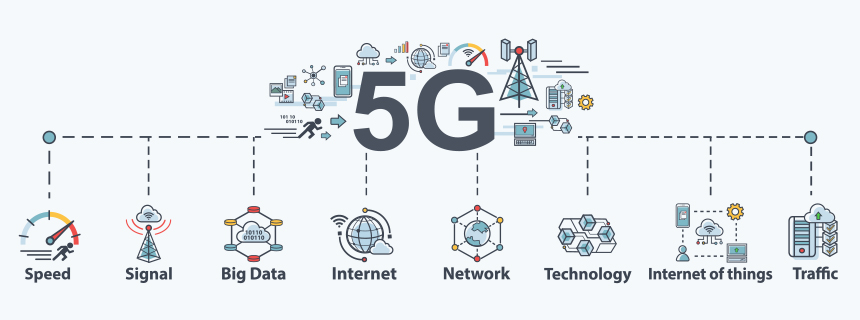Urban Insights
Exploring the pulse of modern cities.
Is 5G Really All It's Cracked Up to Be?
Discover the truth about 5G: is it the game-changer we’ve been promised, or just hype? Uncover the facts and decide for yourself!
The Truth About 5G: Benefits, Myths, and Realities
The advent of 5G technology has sparked significant interest and debate among consumers and industry experts alike. One of the primary benefits of 5G is its potential to drastically improve internet speeds, making activities such as streaming, downloading, and online gaming smoother and more efficient. Additionally, 5G promises to enhance connectivity for a vast number of devices simultaneously, which is essential as the Internet of Things (IoT) continues to expand. However, along with these benefits, several myths about 5G have emerged, particularly concerning health and safety concerns.
Despite the heightened attention surrounding 5G networks, it is crucial to separate fact from fiction. For example, many people believe that 5G technology poses a significant health risk due to increased exposure to radiofrequency radiation. However, numerous studies have indicated that the levels of radiation emitted by 5G networks are well within the safety guidelines established by health organizations. Furthermore, adapting to new technologies often comes with a learning curve. It’s vital for consumers to stay informed about the realities of 5G, balancing the undeniable benefits with accurate information to dispel prevalent myths.

Is 5G Worth the Hype? Analyzing Its Impact on Connectivity
The rollout of 5G technology has sparked a global conversation about its potential to revolutionize connectivity. Proponents argue that its speed, estimated to be up to 100 times faster than 4G, will enable a new era of seamless communication. This unprecedented bandwidth could facilitate real-time applications ranging from immersive virtual reality experiences to the Internet of Things (IoT), where millions of devices communicate effortlessly. However, critics point to challenges such as infrastructure costs and potential health concerns that may hinder its widespread adoption.
Furthermore, the impact of 5G on connectivity extends beyond personal devices. It is poised to transform various industries, including healthcare, transportation, and entertainment. For instance, telemedicine could become more efficient, as high-speed connections allow for real-time patient monitoring and instant doctor consultations. Additionally, autonomous vehicles may depend heavily on 5G for quick data exchange to navigate safely. As we analyze whether 5G is truly worth the hype, it becomes clear that its benefits may reshape our digital landscape, but the journey to full implementation is fraught with obstacles.
5G vs. 4G: What You Need to Know Before Making the Switch
The transition from 4G to 5G is not merely a change in numbers; it signifies a revolutionary leap in mobile technology. 5G promises unprecedented speeds, higher capacity, and lower latency, which can enhance everything from streaming video to managing smart home devices. With 5G, users can expect download speeds that can reach up to 10 gigabits per second, compared to the maximum of about 1 gigabit per second offered by 4G. This advancement opens the door for innovations such as augmented reality, virtual reality, and the Internet of Things (IoT), making it essential to understand how these changes can impact your daily life.
Before making the switch, it's important to consider several factors. Firstly, 5G coverage is still expanding, and while urban areas may benefit from better service, rural regions may lag behind. Additionally, the cost of upgrading devices to be 5G-compatible could be significant. Users should analyze their current data needs and usage patterns to determine whether the benefits of 5G justify the investment. Ultimately, adapting to 5G can provide a superior mobile experience, but it is vital to stay informed and weigh the pros and cons before making a decision.